Advanced Espresso Coffee Brewing Guide
September 27, 2023

There are a handful of new techniques in the coffee world that make a noticeable difference in your cup. If you feel confident in your espresso brewing abilities and want to dive into the nitty-gritty of creating the perfect coffee at home, implementing shot screens and the Weiss distribution technique might be something you're interested in. Here is everything you need to know about these coffee brewing innovations.
The Science Behind The Espresso Shot Screen
Espresso shot screens are not a necessity, but they do make a noticeable difference.These thin screens can be made of paper, mesh, or metal and act as a spacer between the tamped coffee puck and an espresso machine's shower screen. A machine's shower screen has a limited number of holes in its filter for the hot water to stream through, which can potentially leave dry spots, craters, and uneven extractions.
Applying an espresso shot screen adds a second layer (filter) for the water to pass through, forcing it to distribute more evenly across the coffee puck. An espresso shot screen also limits how much space the coffee puck has to expand after becoming saturated with water. Limited saturation, or "constraining the puck," helps produce an extraction with more body. And last but not least, this screen creates an extra filter between the coffee puck and the brew head, therefore, making a more clean-tasting espresso shot.
The Different Types of Espresso Shot Screens
The final result in your cup will vary depending on whether you opt for paper, mesh, or metal shot screens.Paper espresso shot screens work similarly to pour-over filters, like Lardera's bonded paper filters. Our paper filters are specifically manufactured to remove sediments from ground coffee, produce a clean-tasting cup, and help water evenly seep into your grounds, which you'll get from most paper shot screens. However, since paper gets saturated with water, it won't be able to constrain the coffee puck inside its portafilter.
Translation: you'll have a balanced, clean espresso shot with less body.
Mesh, or sieve, coffee filters are slightly better at creating a more full-bodied espresso extraction. These screens do not get as saturated as paper filters and are still flexible, allowing them to partially constrain the coffee puck inside the portafilter.
Overall, metal shot screens are the most well-rounded. Not only are these shot screens conveniently reusable, but they're far more sturdy than their paper and mesh counterparts. Its lack of flexibility effectively prevents your coffee from expanding, providing a clean-tasting, full-bodied extraction.
However, there is one major downside to these metal filters. Their metal composition means they are efficient at absorbing heat from your espresso machine, which as a result, lowers the temperature of your brew. You can compensate for this by pre-warming the metal screen. In the end, each type of shot screen comes with its strengths and weaknesses, so choose what works best for you.

Implementing The Weiss Distribution Technique
This technique strives to achieve the same result as espresso shot screens: more even extractions.When coffee grounds are tamped before brewing espresso, this can lead to clumps and coffee particles being packed together too tightly. This creates uneven extractions and lower pressure inside the portafilter during the brewing process, which means a lesser-quality espresso.
By using a fine needle to gently break up clumps, you are evening out the density of the grounds inside your espresso portafilter, which leads to even extractions.
Various Weiss Distribution Technique (WDT) tools are available on today's market to help you achieve these desirable brewing results at the price of adding an extra step to your process.
It's important to note, however, that WDT is less effective if you don't achieve an even grind beforehand. This requires a high-quality coffee grinder, like our Wilfa Uniform Grinder, which uses 58mm flat burrs to precisely break up beans for whatever style of coffee you're brewing. Only once you achieve the correct grind can you apply WDT for exceptional results.
